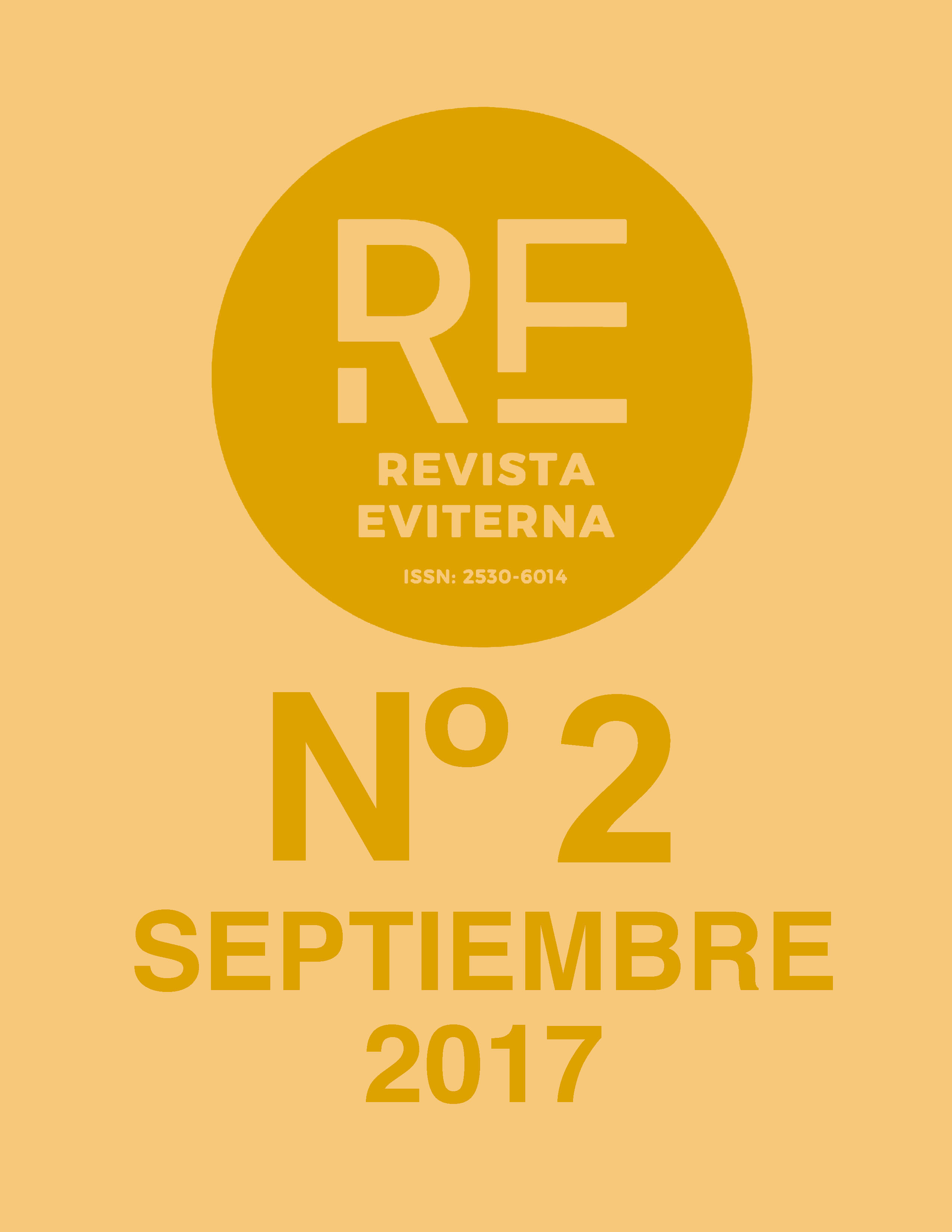Reflections on light and its refractions in the plastic of the technological era. From the visual deception of Federico Miró to the painting ‘lit’ by Alejandro Martín
DOI:
https://doi.org/10.24310/Eviternare.v0i2.8108Keywords:
Paint; technology Age; emerging artists; visual deception; paintingAbstract
The extraordinary capacity of ‘reinvention’ that the painting is developing in the last decades allow to affirm its full vitality: an interesting process of redefinition that is projected in parameters intrinsic to the pictorial language or in others until now little treated, providing the final result plurality, nuances, polysemy and pertinence. These potentialities must be related to the current Technological Age, contaminated by cybernetic, digital and photographic resources. Two emerging artists, Federico Miró and Alejandro Martín, pose in their plastic inquiries a twist to the fascinating world of pictorial creation. The study of historical proposals leads them in each case to discover new paths that border the figurative and the abstract, with points in common but also with notable divergences. And the light acting as a suggestive vehicle to concretize images or check how their projection and reflection on certain elements can be the object of new perceptions.
Downloads
Metrics
Publication Facts
Reviewer profiles N/A
Author statements
Indexed in
-
—
- Academic society
- N/A
- Publisher
- Universidad de Málaga
References
GARCERÁ, J. (2009). Take off your shoes, Galería Álvaro Alcázar: Madrid
STEYERL, H. (2014). Los condenados de la pantalla. Caja Negra: Buenos Aires
Downloads
Published
How to Cite
Issue
Section
License
All the contents published in Revista Eviterna are subject to the Creative Commons Reconocimento-NoComercia-Compartirigual 4.0 license, the full text of which can be found at <http://creativecommons.org/licenses/by-nc-sa/4.0>
They may be copied, used, disseminated, transmitted and publicly exposed, provided that:
The authorship and original source of your publication (Journal, editorial and URL of the work) are cited.
They are not used for commercial purposes.
The existence and specifications of this use license are mentioned.

Copyright is of two kinds: moral rights and patrimonial rights. Moral rights are perpetual, inalienable, inalienable, inalienable, inalienable and imprescriptible prerogatives.
In accordance with copyright legislation, Revista Eviterna recognizes and respects the moral rights of the authors, as well as the ownership of the economic right, which will be transferred to the University of Malaga for dissemination in open access.
The economic rights refer to the benefits obtained by the use or disclosure of the works. Revista Eviterna is published in open access and is exclusively authorized to carry out or authorize by any means the use, distribution, disclosure, reproduction, adaptation, translation or transformation of the work.
It is the responsibility of the authors to obtain the necessary permissions of the images that are subject to copyright.







12.png)



